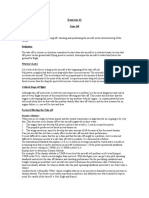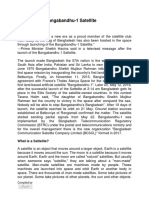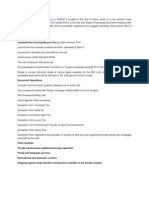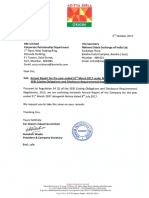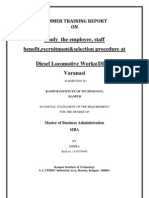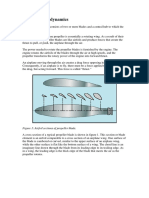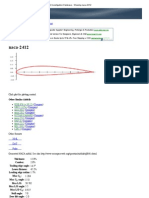Professional Documents
Culture Documents
Paragraph - Bangabandhu Satellite 1
Paragraph - Bangabandhu Satellite 1
Uploaded by
saidur RahmanOriginal Description:
Original Title
Copyright
Available Formats
Share this document
Did you find this document useful?
Is this content inappropriate?
Report this DocumentCopyright:
Available Formats
Paragraph - Bangabandhu Satellite 1
Paragraph - Bangabandhu Satellite 1
Uploaded by
saidur RahmanCopyright:
Available Formats
paragraph
Bangabandhu Satellite-1
Bangabandhu 1 (BD-1), the first geostationary communications satellite of Bangladesh, was
developed by the Bangladesh Telecommunication Regulatory Commission (BTRC). The satellite
was launched into geostationary earth orbit (GEO) in May 2018. Based on the spacebus 4000B2
platform developed by Thales Alenia Space, the Bangabandhu satellite has a launch mass of
3500kg. It includes two deployable solar arrays with batteries and has a design lifespan of 15
years. Thales Alenia Space was selected as the prime contractor to provide turnkey systems,
including design, production and testing services for the BD-1 satellite in November 2015. The
contractual scope also includes the development of the ground segment. BD-1 satellite
communications module integration work was carried out at Thales Alenia Space’s plant located
in Toulouse, France. Thales Alenia Space Belgium, Thales Alenia Space Italy and Thales Alenia
Space Span were also involved in the development of the satellite and its ground components.
The development of the BD-1 satellite was completed at a cost of $248m. The Bangladeshi
Executive committee of the National Economic Council (ECNEC) approved $37.58m in funding
for the development of the country’s first satellite in September 2014. Hong Kong and Shanghai
Banking Corporation (HSBC) provided $17.46m for the construction of the BD-1 and its ground
equipment. The satellite was launched on-board Falcon 9 version 1.2 rocket. The launch
operations were conducted from the spaceX launch site at Cape Canaveral, Florida, US. It is
controlled by two ground stations, which are used for primary and back-up site operations and
control centers. Thales Alenia Space provided tools for the ground segment for the mission
planning and space operations monitoring. It also built two ground facility buildings, which
house the satellite control and network operations centers. Spectra Engineers was contracted to
execute the civil works of the ground facilities. The satellite is fitted with 26ku-Band and 14 C-
Band transponders. The major applications of the spacecraft include DTH, very small aperture
terminal (VSAT) communications, backhaul and trunking, network restoration, and disaster
preparedness and relief. The Bangabandhu (BD-1) satellite provides many facilities to our
country. It provides broadcasting telecommunication services to rural areas in Bangladesh. It also
supports profitable services, including direct-to-home (DTH) services. It offers Ku-Band and C-
Band services across Bangladesh and its territorial waters of the Bay of Bengal, India, Nepal,
Bhutan, Sri Lanka, the Philippines, and Indonesia. The satellite enables the nation to save
approximately BDT 1.08billion ($14m) spent on satellite rents a year. BTRC also plans to launch
follow-on series of BD-2 and BD-3 satellite in phases. Finally, we can say that Bangabandhu
Satellite (BD-1) has taken Bangladesh one step further in the implementation of Digital
Bangladesh.
You might also like
- King Air C90 A-BDocument342 pagesKing Air C90 A-BBruno Graziano Almeida Migliavacca94% (18)
- Vueling BoardingPass PDFDocument2 pagesVueling BoardingPass PDFfabio.mattos.tkdNo ratings yet
- Wind Tunnel Lab ReportDocument5 pagesWind Tunnel Lab Reportmuaz_ds100% (3)
- Development of Mmlps in India: Western DFC Eastern DFCDocument2 pagesDevelopment of Mmlps in India: Western DFC Eastern DFCsdfg100% (2)
- Indian Space Programme PPT BriefDocument24 pagesIndian Space Programme PPT Briefsai420100% (1)
- Our Dhaka and The BeautificationDocument12 pagesOur Dhaka and The BeautificationraselNo ratings yet
- Jute Life CycleDocument16 pagesJute Life CycleericsimuraNo ratings yet
- Pakistan Communication Satellite System PAKSAT - IR PC-I Page 1-115Document114 pagesPakistan Communication Satellite System PAKSAT - IR PC-I Page 1-115Gul Zaib100% (3)
- Flight Instructor Patter Ex12&13Document7 pagesFlight Instructor Patter Ex12&13s raman100% (1)
- Aircraft Manual - Airbus A330 Flight Crew Operating Manual Vol2Document315 pagesAircraft Manual - Airbus A330 Flight Crew Operating Manual Vol2aimee_butler86% (7)
- Bangabandhu-1 Satellite - Complete Essay For 50 MarksDocument10 pagesBangabandhu-1 Satellite - Complete Essay For 50 MarksSajjad Hossain Shuvo65% (26)
- Composition Bangabandhu Satellite-1Document2 pagesComposition Bangabandhu Satellite-1saidur Rahman100% (1)
- Speedy Railway Science Samanya Vigyan PDFDocument194 pagesSpeedy Railway Science Samanya Vigyan PDFxrrbchzsghxyjiyqxoNo ratings yet
- Aerospace IndustryDocument9 pagesAerospace IndustryShashank SinhaNo ratings yet
- Railway Mini ProjectDocument27 pagesRailway Mini ProjectLuv BhardwajNo ratings yet
- INTERSHIP Wagon Repair Shop, Kota, RajasthanDocument18 pagesINTERSHIP Wagon Repair Shop, Kota, RajasthanDeepak Meena50% (2)
- Personal Experience of Industrial VisitDocument1 pagePersonal Experience of Industrial VisitSayan ChatterjeeNo ratings yet
- Proposal IncompleteDocument13 pagesProposal Incompletesujan gautam0% (1)
- Satellites 1mDocument33 pagesSatellites 1mMuhammad Manowar ShuvoNo ratings yet
- Chapter-1 Profile of The CompanyDocument6 pagesChapter-1 Profile of The Companyshalini bhattNo ratings yet
- Customer Perception and Distribution Chanel of HulDocument76 pagesCustomer Perception and Distribution Chanel of HulShariq KhanNo ratings yet
- DFCCIL & Ganga ExpresswayDocument15 pagesDFCCIL & Ganga ExpresswaychuniNo ratings yet
- Final Purbachal BUTMDocument26 pagesFinal Purbachal BUTMdavid46100% (1)
- Automobile PPT-June-2022Document29 pagesAutomobile PPT-June-2022Juhi Agrawal100% (1)
- B.Tech Mech Syllabus PDFDocument226 pagesB.Tech Mech Syllabus PDFDeepak DeepuNo ratings yet
- INDIAN RAILWAYS - Source of Finance BudgetaryDocument12 pagesINDIAN RAILWAYS - Source of Finance Budgetaryjeya chandranNo ratings yet
- Asianpaints Company ProfileDocument7 pagesAsianpaints Company ProfileRakib IslamNo ratings yet
- Marketing Strategies of VodafoneDocument90 pagesMarketing Strategies of VodafoneVinay Cool33% (3)
- Belt and Road Initiative - WikipediaDocument24 pagesBelt and Road Initiative - WikipediaFazal AhmadNo ratings yet
- NHPC LTD.: Nifty 50 SensexDocument8 pagesNHPC LTD.: Nifty 50 SensexAbhishekNo ratings yet
- Literature Review: Chocolate & Confectionery PackagingDocument10 pagesLiterature Review: Chocolate & Confectionery PackagingAhmed KabirNo ratings yet
- FINAL Sugar Brochure1Document6 pagesFINAL Sugar Brochure1Virnic FarmNo ratings yet
- Kandla SezDocument5 pagesKandla Sezgagan15095895No ratings yet
- Summer Training Project ReportDocument75 pagesSummer Training Project ReportManish Singh50% (4)
- Improvised Project RoadDocument34 pagesImprovised Project Roadcreation galleriesNo ratings yet
- File 5 PDFDocument10 pagesFile 5 PDFAyesha AkhterNo ratings yet
- Proposed Santragachi Railway Station For S. E. RailwayDocument36 pagesProposed Santragachi Railway Station For S. E. RailwayHitesh Khanna100% (3)
- Codes and ManualDocument1 pageCodes and ManualKailasam MNo ratings yet
- Meti InternshipDocument12 pagesMeti InternshipTaye GulilatNo ratings yet
- Country Presentation On: WelcomeDocument52 pagesCountry Presentation On: WelcomeTarun ChakrabortyNo ratings yet
- West India Multi Modal ProjectDocument27 pagesWest India Multi Modal ProjectUma Kannan100% (1)
- Nepal List of VDC MunicipalitiesDocument273 pagesNepal List of VDC MunicipalitiesAnonymous 16Gz2mqc0% (1)
- Civil Computer ApplicationDocument26 pagesCivil Computer ApplicationSithu Kannan100% (2)
- Grasim 2017 - 5003000317Document353 pagesGrasim 2017 - 5003000317Arif Yuli Setyono100% (1)
- Project Report Work On Direct-To-Home Satellite Broadcasting - Kumar DeepakDocument37 pagesProject Report Work On Direct-To-Home Satellite Broadcasting - Kumar DeepakKumar Deepak100% (2)
- Outer Ring Road Development Project: Kathmandu Valley Development AuthorityDocument18 pagesOuter Ring Road Development Project: Kathmandu Valley Development AuthorityPotterhead KevinNo ratings yet
- Visvesvaraya Technological University Belagavi, Karnataka: Internship Report OnDocument31 pagesVisvesvaraya Technological University Belagavi, Karnataka: Internship Report OnAafaq AltafNo ratings yet
- Gktoday MCQ June 2023Document55 pagesGktoday MCQ June 2023Nafis UnnisaNo ratings yet
- De Report PDFDocument22 pagesDe Report PDFJaydeep ParmarNo ratings yet
- DLW Summer Training Report 1Document39 pagesDLW Summer Training Report 1Surabhi Purwar33% (3)
- Gktoday MCQ May 2023Document53 pagesGktoday MCQ May 2023Pragati GiriNo ratings yet
- PDF Project Report On e Bikes CompressDocument57 pagesPDF Project Report On e Bikes Compresssuttu KunjiNo ratings yet
- Training ReportDocument32 pagesTraining ReportBhavyaNo ratings yet
- China Construction ContractorsDocument3 pagesChina Construction ContractorsAbdul WahabNo ratings yet
- RajkotDocument29 pagesRajkotBig SurNo ratings yet
- Bangladesh Growth ofDocument41 pagesBangladesh Growth ofNodi100% (1)
- School MGMTDocument147 pagesSchool MGMTashokNo ratings yet
- Report On Winter Internship (Recovered)Document32 pagesReport On Winter Internship (Recovered)Danyal RizviNo ratings yet
- Tom Mboya Labor College: DSCM 3: Project and Contracts Management/ DPM 2: Project Procurement ManagementDocument33 pagesTom Mboya Labor College: DSCM 3: Project and Contracts Management/ DPM 2: Project Procurement Managementjoshua omondiNo ratings yet
- Bangabandhu Satellite 1Document3 pagesBangabandhu Satellite 1Salman ShamimNo ratings yet
- Bangabandhu-1 Satellite AssigenmentDocument3 pagesBangabandhu-1 Satellite AssigenmentSajal MozumderNo ratings yet
- Assignment: Course Code: SWE425 Course Title: Telecommunication Network Engineering With LabDocument3 pagesAssignment: Course Code: SWE425 Course Title: Telecommunication Network Engineering With LabMd Ashikur Rahman AshikNo ratings yet
- ISRODocument121 pagesISRObatmanbittu100% (2)
- Bangabandhu SatelliteDocument5 pagesBangabandhu SatelliteMd Kawsarul IslamNo ratings yet
- Bangabandhu SatelliteDocument5 pagesBangabandhu SatelliteMd Kawsarul IslamNo ratings yet
- MD Riadul IslamDocument85 pagesMD Riadul Islamsaidur RahmanNo ratings yet
- Human Resource Accounting & AuditDocument2 pagesHuman Resource Accounting & Auditsaidur RahmanNo ratings yet
- Chittagong Universitry Human Resource Club Yearly Plan 2020-2021 Research and Academic WingDocument6 pagesChittagong Universitry Human Resource Club Yearly Plan 2020-2021 Research and Academic Wingsaidur RahmanNo ratings yet
- Saimum Vhai - AZ Sir Intern ReportDocument68 pagesSaimum Vhai - AZ Sir Intern Reportsaidur RahmanNo ratings yet
- Assignment of Human Resource Accounting & AuditDocument1 pageAssignment of Human Resource Accounting & Auditsaidur RahmanNo ratings yet
- Intern ReportDocument72 pagesIntern Reportsaidur RahmanNo ratings yet
- Change Management - Org CultureDocument3 pagesChange Management - Org Culturesaidur RahmanNo ratings yet
- Paragraph - 7th March SpeechDocument1 pageParagraph - 7th March Speechsaidur Rahman100% (1)
- Techniques For Change-1st ChapterDocument3 pagesTechniques For Change-1st Chaptersaidur RahmanNo ratings yet
- Topic of Compliance Management Chapter 9Document13 pagesTopic of Compliance Management Chapter 9saidur RahmanNo ratings yet
- What Is Evidence Based HRDocument3 pagesWhat Is Evidence Based HRsaidur RahmanNo ratings yet
- USA and China Trade War and Its Impact On BangladeshDocument2 pagesUSA and China Trade War and Its Impact On Bangladeshsaidur RahmanNo ratings yet
- Business Social Compliance InitiativeDocument4 pagesBusiness Social Compliance Initiativesaidur Rahman100% (1)
- Saidur Rahman: Personal InformationDocument2 pagesSaidur Rahman: Personal Informationsaidur RahmanNo ratings yet
- 20 Business CompetitionsDocument20 pages20 Business Competitionssaidur RahmanNo ratings yet
- LAA Type Acceptance Data Sheet 029 Clutton Fred Series 2 and 3Document5 pagesLAA Type Acceptance Data Sheet 029 Clutton Fred Series 2 and 3cluttonfredNo ratings yet
- Venture Into Space Early Years of Goddard Space Flight CenterDocument371 pagesVenture Into Space Early Years of Goddard Space Flight CenterBob Andrepont100% (1)
- Circling 2011 IPDDocument20 pagesCircling 2011 IPDSufiNo ratings yet
- The Aerodynamic Analysis of BWB Baseline Ii E5-6 Uav With Canard Aspect Ratio (Ar) of 6 at Angle of Attack of 0 Deg at 0.1 Mach Number Through CFD Simulation at Different Canard Setting AnglesDocument88 pagesThe Aerodynamic Analysis of BWB Baseline Ii E5-6 Uav With Canard Aspect Ratio (Ar) of 6 at Angle of Attack of 0 Deg at 0.1 Mach Number Through CFD Simulation at Different Canard Setting AnglesHilmi Adzis100% (1)
- SVMG - SVRS Jeppesen ColinaDocument2 pagesSVMG - SVRS Jeppesen ColinaJose Francisco ColinaNo ratings yet
- Cycle 202006 - May 21st Through Jun 17thDocument30 pagesCycle 202006 - May 21st Through Jun 17thAlireza Samavati.HNo ratings yet
- Propeller Aerodynamics PDFDocument11 pagesPropeller Aerodynamics PDFMaurizio Bernasconi100% (2)
- Vanguard A HistoryDocument329 pagesVanguard A HistoryBob AndrepontNo ratings yet
- Yaw Dynaminc of Horizental Axis Wind TurbineDocument189 pagesYaw Dynaminc of Horizental Axis Wind TurbineairosunNo ratings yet
- Working Tables For Compressible FlowDocument30 pagesWorking Tables For Compressible FlowJeremy GorospeNo ratings yet
- AER622 Outline 2014Document3 pagesAER622 Outline 2014omissammassimoNo ratings yet
- Airfoil Investigation Database - Showing Naca-2412Document1 pageAirfoil Investigation Database - Showing Naca-2412sudharshanreddymNo ratings yet
- Lift and DragDocument9 pagesLift and DragJair GonzalezNo ratings yet
- Elash Listening PracticeDocument3 pagesElash Listening Practicerafabarajim100% (1)
- General RevisionDocument195 pagesGeneral Revisionw_tahanNo ratings yet
- FORM - 18A-21A - Aircraft Visit Checklist - TYPE TRAINING - B1 - An - B2 - REV - OriginalDocument4 pagesFORM - 18A-21A - Aircraft Visit Checklist - TYPE TRAINING - B1 - An - B2 - REV - OriginalDavid OwenNo ratings yet
- Bombardier CRJ 00-Flight ControlsDocument58 pagesBombardier CRJ 00-Flight ControlsWilliam Jaldin CorralesNo ratings yet
- Buoyancy Explains How Planes FlyDocument17 pagesBuoyancy Explains How Planes FlyBogdanNo ratings yet
- GTG Etops Vol I Issue01Document53 pagesGTG Etops Vol I Issue01Tiago100% (1)
- FAR 23 Training OutlineDocument3 pagesFAR 23 Training Outlinesadi_koaNo ratings yet
- Propulsion IIDocument2 pagesPropulsion IIkannanNo ratings yet
- VIDPDocument30 pagesVIDPgurpreet0% (1)
- Alert Service Bulletin: ASB MBB-BK117 C-2-67A-015Document6 pagesAlert Service Bulletin: ASB MBB-BK117 C-2-67A-015Raymond ZamoraNo ratings yet
- Krasnov - Aerodynamics 1Document512 pagesKrasnov - Aerodynamics 1fedeoseayo100% (3)
- P 806 (Voice)Document86 pagesP 806 (Voice)rhino1100% (1)








